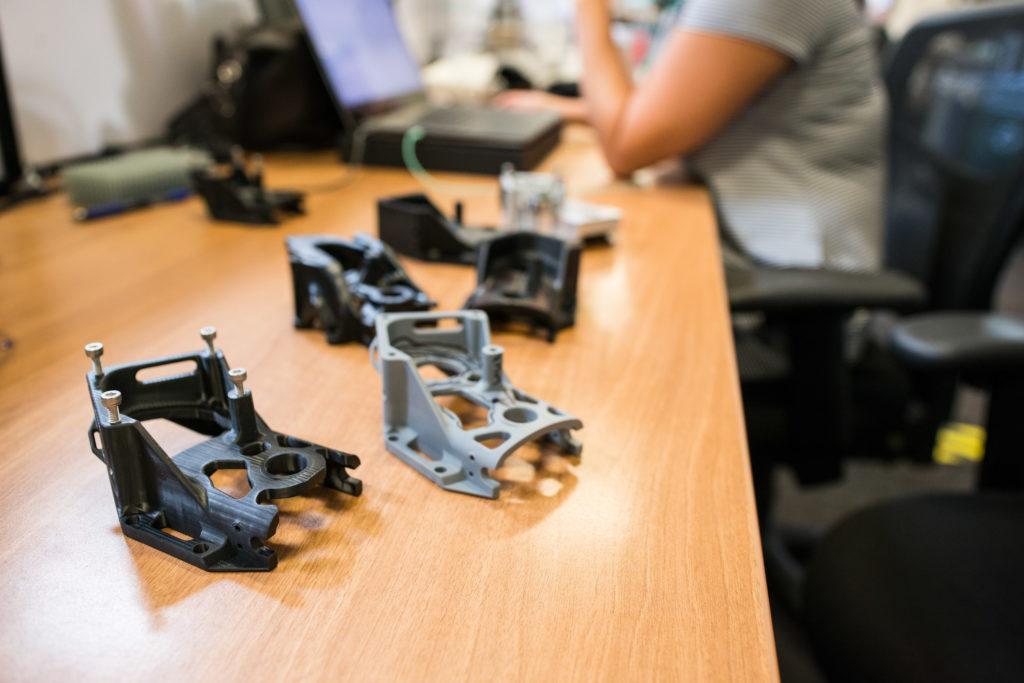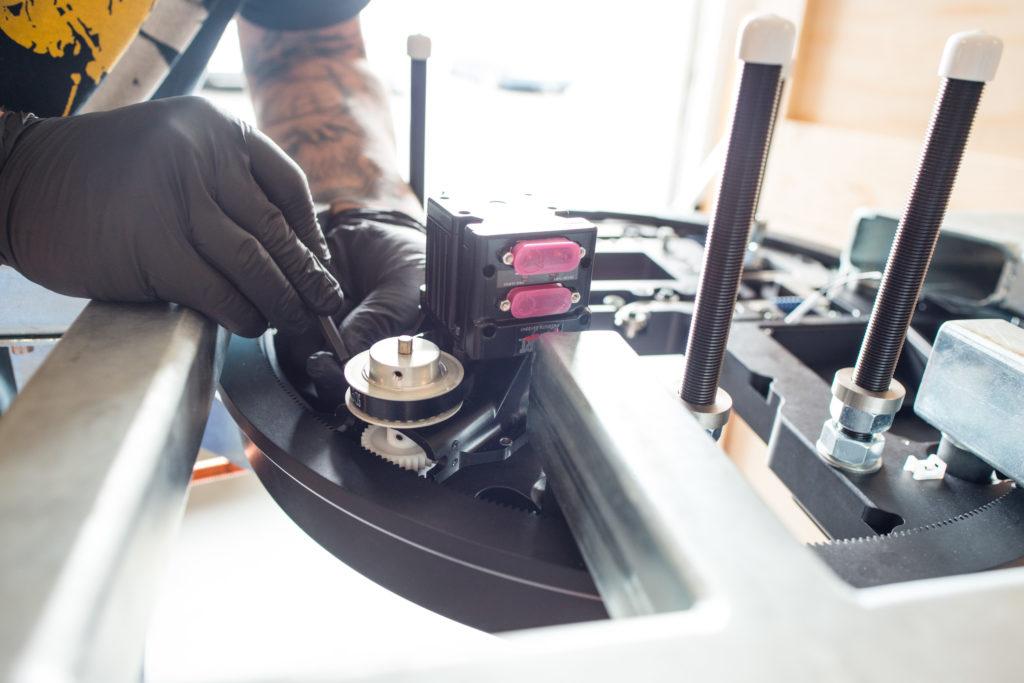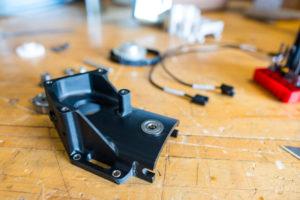 I haven’t yet heard a negative thing about Carbon’s M1 3D printer since its release in April. Case studies are already confirming that the hype surrounding the printer isn’t just hype, and that the M1 lives up to expectations: it’s incredibly fast, it produces exceptionally strong and smooth parts, and it’s capable of producing components with complex geometries that most other printers can’t manage. Oh, and it’s self-replicating. What? No one mentioned this!
I haven’t yet heard a negative thing about Carbon’s M1 3D printer since its release in April. Case studies are already confirming that the hype surrounding the printer isn’t just hype, and that the M1 lives up to expectations: it’s incredibly fast, it produces exceptionally strong and smooth parts, and it’s capable of producing components with complex geometries that most other printers can’t manage. Oh, and it’s self-replicating. What? No one mentioned this!
Ok, it’s not fully self-replicating – yet, anyway, so don’t start fantasizing about Carbon RepRap. The idea of self-replication is something that Carbon’s engineers are starting to explore, though, and they’ve already succeeded in getting the M1 to print one new part for itself.
 During the M1’s initial product development, the printer’s door was causing some issues. In particular, it was the motor mount and its inconsistent gear lash and belt tension that were the source of the headaches, so mechanical engineer EJ Sabathia set out to redesign the part. The original motor mount was CNC machined from aluminum, and Sabathia intended to manufacture his redesigned part in the same way, but first he 3D printed a prototype with an M1, using Carbon’s rigid polyurethane (RPU) resin.
During the M1’s initial product development, the printer’s door was causing some issues. In particular, it was the motor mount and its inconsistent gear lash and belt tension that were the source of the headaches, so mechanical engineer EJ Sabathia set out to redesign the part. The original motor mount was CNC machined from aluminum, and Sabathia intended to manufacture his redesigned part in the same way, but first he 3D printed a prototype with an M1, using Carbon’s rigid polyurethane (RPU) resin.
“For this particular part we were looking for both tensile and yield strength,” he said. “This part has to hold threads and it has to withstand a lot of tension since it’s mounted to a machine with screws. RPU was the perfect choice.”
RPU has been very well-reviewed so far for its strength and ductility, and it worked wonderfully for Sabathia’s prototype. So well, in fact, that he decided to use it for the final part. During functional prototyping tests, he discovered that not only was the printed part fully suited to be used as an end-use part, but that it actually showed several improvements over aluminum – for instance, it eliminated motor noise that the original aluminum part had amplified.
 With the help of Carbon’s advanced design team and print studio, Sabathia made a few adjustments to the part design to optimize the accuracy and speed at which it could be printed. Once it was perfected, the team discovered that 3D printing the motor mount actually lowered the cost per part by $8, and reduced material requirements – as Sabathia pointed out, the problem of the motor noise with the aluminum part would have had to be addressed with some sort of dampening material. Now that’s not necessary, and Carbon is already producing and installing the RPU part in current M1 printers.
With the help of Carbon’s advanced design team and print studio, Sabathia made a few adjustments to the part design to optimize the accuracy and speed at which it could be printed. Once it was perfected, the team discovered that 3D printing the motor mount actually lowered the cost per part by $8, and reduced material requirements – as Sabathia pointed out, the problem of the motor noise with the aluminum part would have had to be addressed with some sort of dampening material. Now that’s not necessary, and Carbon is already producing and installing the RPU part in current M1 printers.
 While he didn’t go into detail, Sabathia said that he is working on several other projects related to part design or redesign for the M1. Will the printer eventually be able to print a full copy of itself? We’ll see – most self-replicating printers have pretty basic designs, which the M1 does not. There’s a good possibility that at least a few of its parts could be redesigned and 3D printed, though, especially with Sabathia working on them.
While he didn’t go into detail, Sabathia said that he is working on several other projects related to part design or redesign for the M1. Will the printer eventually be able to print a full copy of itself? We’ll see – most self-replicating printers have pretty basic designs, which the M1 does not. There’s a good possibility that at least a few of its parts could be redesigned and 3D printed, though, especially with Sabathia working on them.
“The ability to do things differently is one of the reasons I came to Carbon,” he said. “In other places I’ve worked, I would have used 3D printing technology solely for prototyping, but would have had to rely on traditional methods for final production. At Carbon, I’ve been given the freedom, the opportunity, and the technology to prove that 3D printing can be a means for final part production.”
That’s one of the aspects of Carbon’s CLIP technology that has gotten so many people so excited – its ability to create parts that are suitable for end use, something that’s still a relative rarity in 3D printing. Carbon has stated that they’re going to change that – and the M1 itself is evidence that they’re already following through. Discuss further in the Carbon Self-Replicating 3D Printer forum over at 3DPB.com.
[Source/Images: Carbon]Subscribe to Our Email Newsletter
Stay up-to-date on all the latest news from the 3D printing industry and receive information and offers from third party vendors.
Print Services
Upload your 3D Models and get them printed quickly and efficiently.
You May Also Like
U.S. Navy Lab Uses 3D Printing to Reduce Tooling Lead Time By Over 90%
The F-35 Lightning II Joint Program Office (JPO), responsible for life-cycle management of the key fifth-generation joint strike fighter (JSF) system used by the U.S., its allies, and its partners,...
Etsy Design Rule Change Reduces Selection of 3D Printed Goods
Online marketplace Etsy has implemented a rule change requiring all 3D printed goods on the site to be original designs. The update to the site’s Creativity Standards states, ¨Items produced using...
Honeywell Qualifies 6K Additive’s Nickel 718 for 3D Printed Aerospace & Defense Parts
6K Additive is renowned for manufacturing sustainable additive manufacturing (AM) powder, and offers a wide portfolio of premium metal and alloy powders that include titanium, copper, stainless steel, and nickel,...
MetalWorm Sells WAAM Systems to Research Institutes in Brazil and Malaysia
Turkish WAAM firm MetalWorm has sold a system in Malaysia and another in Brazil. This is an excellent example of a few emerging trends in additive. Firstly, WAAM was experimented...


































